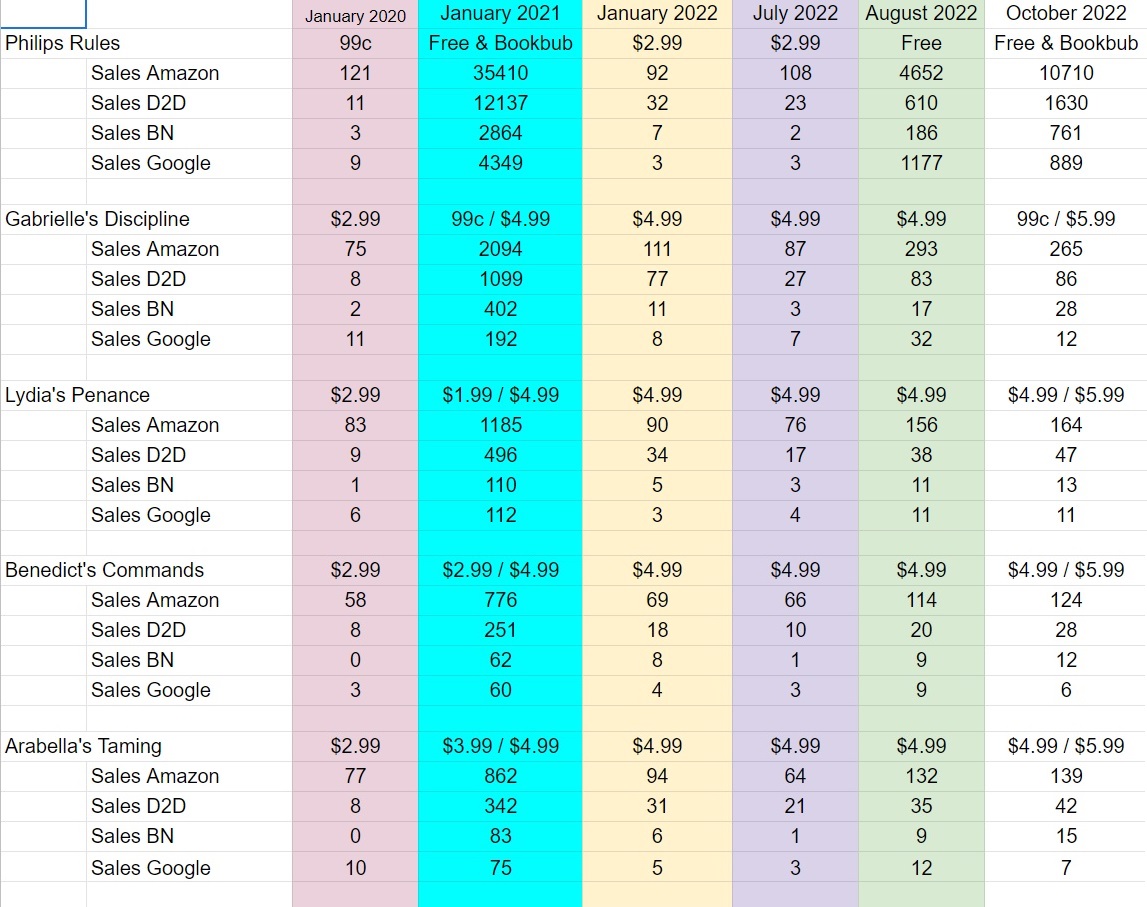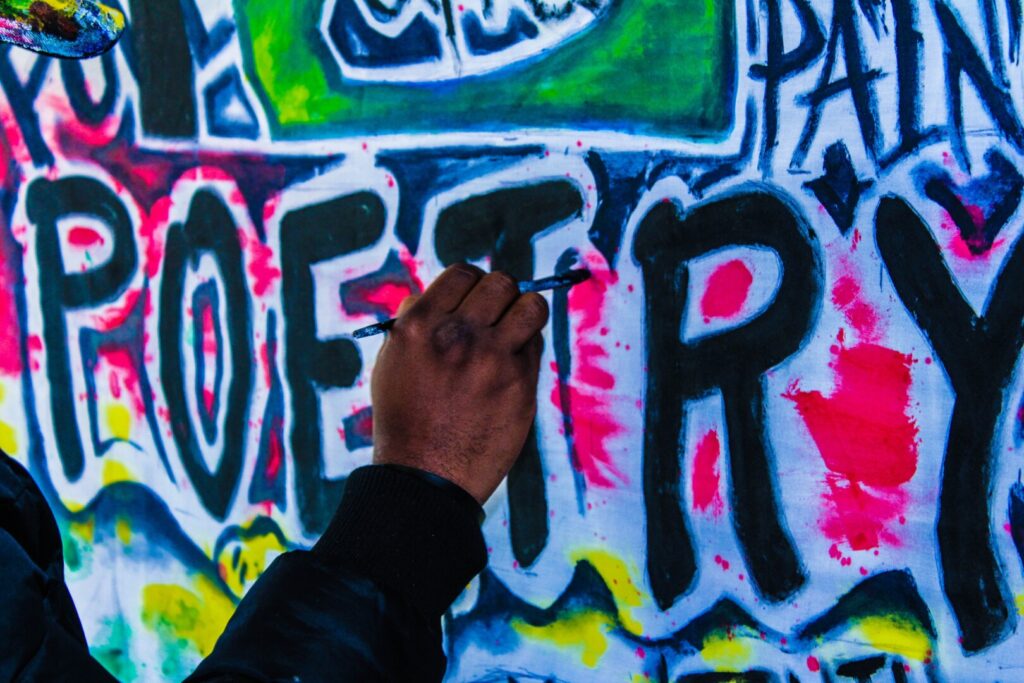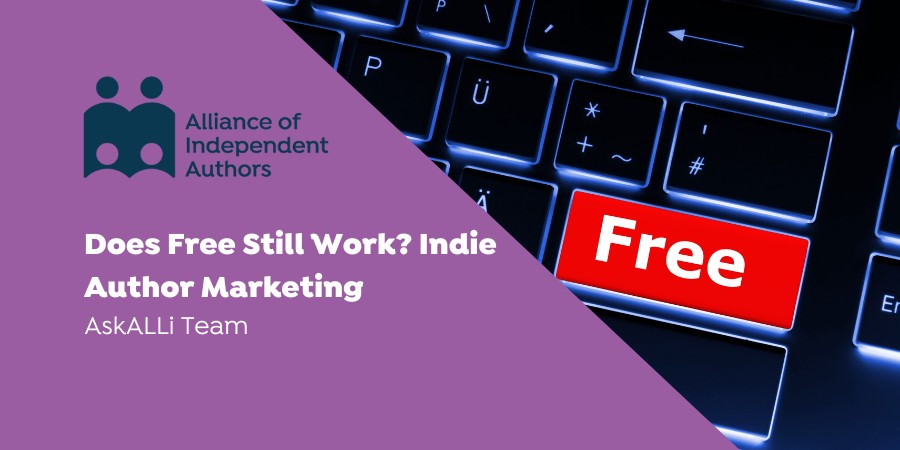You've spent weeks, months ,or even years working on a book. Countless hours of blood, sweat and tears, and now you have to give your work away for free? It can be a hard one to accept, but if you shift your mindset, using “free” as a marketing tactic or a tool in your book promo belt, can work wonders for you. Today, the Alliance of Independent Authors AskALLi team is asking and answering the question, does free still work?
What is Free?
You might think that “free” is obvious. You just don't pay for it. But that's not quite how free works in today's book market. Of course, yes, there are certain things that cost nothing to buy at the point of sale.
For example, a book priced at $0 is clearly free. Indie authors call the concept of putting a book out into the world priced 0 and leaving it out there for free a “permafree” or permanently free. The notion is akin to entering a supermarket and seeing a “taster” cart with a seller handing out free samples. The purpose, of course, is to entice you in to buy more and the free book works in the same way. It's there purely to entice you in to read more—which you would then pay for.
Books borrowed from the library are, for the most part, free. But what of the “borrow” model? Platforms like Kindle Unlimited, Kobo Plus, Scribd and Audible Unlimited mimic the concept of borrowing and free.
With these plans, you pay a subscription fee each month, but you're then able to borrow, consume and return books and audiobooks. At the point of borrowing and consuming, the reader is not paying, and therefore it creates the sense of “free” even though they're paying for a monthly subscription.
So “free” isn't quite as simple as setting the price on your book at zero. Even where we are being paid from the likes of subscription models, it's the mindset of the consumer that's driving the concept of “free”.
The History of “Free”
The Kindle device was first introduced in 2012. Not only did it revolutionise how we read, but how we market, too. Shortly after its introduction, the “kindle gold rush” began. A period where you could set your book to free, and then when it returned to its paid price, it held some of the higher rank it had earned while free.
This meant you would get increased visibility on your book and thus increased sales once the book when back to full price. It was a golden tool for putting thousands of eyes on your books, and quickly. Something a lot of indies capitalised on to rapidly grow their fan bases and, subsequently, income. That period is well and truly over now as the algorithms and rules changed and continue to evolve.
Despite the initial gold rush being over, the methods still hold value. The reason “free” was—and still is—such a fantastic tool for indie authors, is that the trade publishers didn't use “free” as a marketing method during the gold rush. Many still don't. This allows for indies to capitalise on the market space of “free tasters”.
The gold rush is over, so is “free” still a useful tactic, or should we be spending our time looking at other marketing methods?
Types of Free
There are many types of free. We've already discussed the fact that “free” isn't seen uniformly across the industry. But what other types of free are in use?
- Permafree: usually a first in series book that's set to zero for a continued period.
- Limited sale: a book (not necessarily first in series) that is set to free for a limited period.
- Freemium: this is a free “thing” such as a webinar and at the end has a premium product of the speaker's promoted. Such as a webinar on how to drive sales, which covers three top tips and then an offer of a discount to join the speakers' premium priced course. Another version of freemium is where you get free forever access—to a product, but limited usability of the features.
- We're also seeing authors with the ability to sell direct doing combos like: free ebook with full price audiobook purchase.
- Free Trial: where you get access to a membership, subscription or piece of software but for a limited time.
Amazon KDP
In the Kindle Store, the Best Sellers Rank is divided into free and paid lists. If you enroll in KDP Select, your book will have a ranking in the free list during its free promotional period. “Once the free promotion is over,” KDP says, “your book's previous paid rank will influence its new rank when it enters the paid categories again.”
There was a time that wasn’t so, when free had an influence on paid rankings and vice versa.
Orna Ross remembers:
“I put my first novel into a BookBub free book promo in December 2011, I had tens of thousands of downloads and shot to the top of the charts, which then carried over into my paid ranking. That doesn’t happen any more. Around 2015, Amazon changed the rules. Now free lists and paid lists are separate, which led to lots of authors to say “Free is over”
Does Free Still Work? It's About Business Models

Orna Ross, Director of ALLi
Orna Ross on Product Ecosystem
Lots of research shows that businesses with just one product type are limited and less resilient to market changes. It isn’t about just having a range of products, it’s about having different product types that work together. A product ecosystem.
It was my business mentor, Daniel Priestley of Dent Global, who introduced me to this concept. I hadn’t heard the term before but he was describing what I’d observed successful indie authors doing, and what I’d been doing myself for years, without calling it that. The idea is that your offerings and your products complement each other and work symbiotically in an integrated way that makes selling easier.
Priestley (and many others) recommend having four distinct product categories that operate as a single ecosystem.
- Gift product
- Free or cheap product for prospect
- Core products
- Premium products
Translating that into author-publishing, that looks like:
- Gift giveaways: anything you give freely, no strings attached e.g. donations to charity, social media posts, mentoring or coaching aspiring writers
- Reader magnet: anything offered in exchange for a sign-up or sale. e.g. free book or other publication
- Core products—your books (for sale).
- Premium products: higher ticket items for sale that are connected to your books e.g. courses, memberships, merchandise.
This is a numbered list because it’s scaled (from cheapest to most expensive), and it’s sequential (designed to progress the reader from receiving a freebie out two to spending money on your books and then on your more profitable products.
The gift enables them to know, like and trust you and creates interaction and interest, while at the other end of the chain, premium products make your author business more resilient by providing additional income streams. Your books are at the core of the sequence.
Case Study: “Do freebies work?” Golden Angel

Golden Angel, Autho
Golden Angel is a USA Today best-selling author and self-described bibliophile with a “kinky” bent who loves to write stories for the characters in her head. If she didn't get them out, she's pretty sure she'd go just a little crazy. She is happily married, old enough to know better but still too young to care, and a big fan of happily-ever-afters, strong heroes and heroines, and sizzling chemistry. When she's not writing, she can often be found on the couch reading, in front of her sewing machine making a new cosplay, hanging out with her friends, or wandering the Maryland Renaissance Fair. Find out more about her on her websites: www.goldenangelromance.com and www.sinistreange.com
Golden shared the result from her “free 99c experiments”.

The first three columns are Januarys because I wanted to make them the best comparison possible – three diff years but the same month and the same book during all three years, but at
different price points. The series was completed in 2018, so this is FIRMLY backlist.
In January 2020, it was 99c because (despite having 2 permafreebies) I was hemming and hawing over making book one free, but I still wanted a ‘loss leader' price.
At the end of December 2020, I made it free, put a new cover on Philip's Rules, and started planning for a promotion for the second week of January. I think the incredible downloads for January 2021 were a combination of: Philip's Rules being free for the first time, having a Bookbub (and my many promos stacked around it), and the fact that the first Season of Bridgerton released literally 2 weeks before the Bookbub. It was the perfect storm. I spent about $500 on Facebook ads, and since I hadn't taken Skye's class yet, they were def “just throw ads up and maybe they helped?”
I put in January 2022's numbers because after 6 months I raised the price to $2.99 – as you can see; I was selling less units at $2.99 BUT with a 70% royalty vs 35% I was also making more money off that one book alone than I had been when it was 99c.
Why is July 2022 on there? Mostly because August 2022 is when I made Philip's Rules free again and I wanted to show the difference from the prior month. Now, clearly August didn't do as well, BUT that's also because I wasn't stacking promos, I had them spread out throughout the month and I didn't have a Bookbub until October. For the second run of a freebie Bookbub, it had already been free for two months AND I only stacked a little since I'd already promoted it in the previous two months, plus I had already pulled back my FB ads a bit.
Does free still work? Absolutely, if for no other reason than the read through income.
Free and “Poetry”
Poets have always worked for free. What’s unusual about poetry today is how it can now be promoted and sold, just like other digital content.
The poet has to work harder, not because there is any shortage of readers who like poetry, but because poetry readers are often slower to buy books. They get their hit from the poem. The better the poem, the more likely it is that they are satisfied for now. They don’t necessarily want to read more, as the reader who’s just read the intriguing start to a story extract or story series does.
For the poet, and for certain kinds of fiction and nonfiction too, it can take longer, but it’s the same method, the same ecosystem of products that eventually brings success. You keep giving away your poems on Instagram or wherever and one day, after they’ve been moved multiple times by your poems, the reader makes the crossover and signs up for your newsletter.
Is Free Still Worth It? Yes, but…
On the question of ‘does free still work?' The AskALLi team thinks yes, but…
Free is still worth it, but only if you're using it strategically and for a purpose. Things to consider:
First in Series Free (FISF)
As a series fiction author, having your first book in your series “free” is a great method for utilising free in your marketing strategy. However, just setting your book to free won't generate the return on your investment that it used to. The Kindle gold rush is over.
The Importance of Traffic
This means unless you drive traffic towards your free book, you won't see the number of downloads you need to make a good profit. What can you do? Applying for promotions, tell your newsletter readers, ask other authors in your genre to promote the book, share in reader groups and potentially advertise, too. But just putting your book “free” is unlikely to yield positive results.
Does it have to be a FISF?
No. If you're an author who writes episodic books with interconnecting characters, like books with cases or romances set in the same town, then you have much more flexibility. Each book serves as a door into your series and so you have more room to use free across your different books.
Genres also play a role and experimenting to establish whether “free” is a worthwhile price point in your genre is important.
Continue Experimenting
With all businesses, experimentation is key. The only constant in publishing is change. And that means what once worked may not in the future. What works now may not have worked previously and unless you constantly trial, test and iterate, you can easily miss techniques, strategies, marketing and promotional methods worth investing in.
Restrict What's Free
Free (complete giveaways) and freemium (some free content, some locked) are tried and tested marketing models that long predate digital publishing, and are widely used outside of book marketing. Consider how you can use these to boost your readership and sales.
Free is much wider than KDP Select or first in series permafree. Book giveaways on social media or Goodreads or to book influencers are a form of free too. As are newsletter swaps and reader magnets.
Free is alive and well in the publishing world and indie author community.
Mindset is Key
Many authors shudder at the thought of giving away books for free. It’s not surprising—it takes some months, maybe some years, of work to make a good book– but it is misguided. It misses the point about how digital publishing works.
Ebooks, audiobooks and print-on-demand books are digital products, largely sold online, like apps, music, videos, or games. Promoting them requires a digital marketing approach, not a physical bookstore shopfront approach and this is something indie authors often struggle with.
The physical warmth of a offline book signing is almost impossible to replicate on the Internet but you need to attract attention and new readers. Free books are the digital equivalent to the traditional book signing. They don’t cost you anything to give away and they enable you to build the knowing, liking and trusting that is necessary for a reader to take out the credit card.
Getting your name and ebook out there to as many readers as possible is actually more important during your launch than selling books. No one knows who you are, yet. If you’re only pushing sales, you’ll only have as many readers as actually buy from you and sales on first books are rarely high. Many authors are lucky to have ten or 20 readers beyond family or friends in that first month.
That means you only have ten or 20 readers.
If you can give away 1,000 copies of your ebook in your first month, you greatly increase your chances of getting retail and blogger reviews, which ultimately leads to more sales.
And when you have more than one book, you have a better chance of making follow-on sale too.
Does Free Still Work? ALLi Member Experiences
AD Starrling On Testing and Knowing Your Genre Will Impact Your Methods
Back when I was still wide, I tested paid ads (FB) with a permafree first in series, paid ads with a discounted (99p/99c) first in series, and paid ads with a fully priced ($3.99-4.99) first in series. I ran this test twice over a period of two years.
Hands down, my best ROI came with paid ads with a fully priced first in series. I've been in KU since August 2019 and have steadily increased my prices over the past couple of years. I write UF and gay UF romance and my latest releases are all priced at $5.99. I'll likely be going up to $6.99 in 2023.
The firsts in series I'm advertising are all $4.99 and I see ROIs ranging from 150-600% with FB ads with those books (I only started FB ads again in August this year). I still do free promos, but only time-limited ones focused around new releases. I find free promos work better than 99p/99c ones these days for ROI. The only free things I offer routinely are the reader magnets for each pen name.
I think this question is definitely a “your mileage may vary” one. It's clear from the other answers in this thread that free still works for many authors. The best thing to do is to try it for your books and see. But don't do it willy-nilly like I did the first time! Have a plan and give it time so you can better evaluate the results.
Genre is a strong factor in this too. My readers are whale readers and were buying exclusively on Amazon or reading in KU even when I was wide. Most authors in my genres and subgenres are in KU. As for pricing, my gay UF romance readers do not care and my mainstream UF readers apparently don't care either that I've raised my prices by a dollar/pound. A lot of gay MM authors pushed their prices up to $5.99 last year and we didn't see a drop in income. And I was seeing my competitive authors in mainstream UF do this even before that.
Like many have said in their answers, backlist is key to any strategy.
Jessica Kotzer on Lower Quality Subscribers
Free is a good list building strategy, but can also result in lower-quality subscribers. My 5k list that I built on free has the same 20% open rate of my 100k list built on coupon codes, where the intent to buy is clear.
Phillipa Nefri Clark on The Importance of Sell Through
I love this subject! I am wide and use one permafree first-in-series (FFIS), plus occasionally making other books free for a limited time, and having free reader magnets for newsletter subscribers and certain promos.
The whole series sells consistently. I have calls to action for the next in series in the back matter of each book and that definitely has helped drive readers to buy on after they finish one.
I have the permafree on the front page of my website and periodically market it using ads and newsletters. I aim for BookBub Featured Deals for the permafree at least twice a year and also use FreeBooksy and similar. If downloads taper off, I use Facebook ads for the first book. Because I have had few releases for the past year, I've been living off my backlist. My second in series keeps the bills paid, and the rest become profit.
Every time I set a book free, I promote it heavily at first and have always seen good sell-through to other titles. Last year, I moved to full-time writing and left KU around the same time. I was fortunate to get a Bookbub Featured Deal (BBFD) for what is now my permafree and that helped kick on sales on the ex-Amazon channels. I put the book back to normal price and although it still sold well, the rest of the series was slower. Then early this year I got another BBFD for the same book and left it free. I was nervous about making my bestselling title free, but that series has now become its own little eco-system and my cost of marketing has dramatically dropped.
Calle Jaye Brookes on Capitlizing on Backlist
For me, yes. I have 50+ books published now (4+ series), and have between 5-10 permafrees of varying lengths at any one time (I rotate). While read-through isn't nearly what it was back when I first started publishing, my permafrees still send a very steady amount of readers through the rest of my backlist. 95% of my revenue each year is from backlist, driven by permafrees. (I do very little advertising, besides an occasional promo like Freebooksy, etc. and–if I'm lucky–one or two Bookbub featured deals–per year.) In a nutshell, permafrees propel my business to six figures every year. And have since my first six-figure year in 2014.
Laura Heffernan on Why More Books in a Series Helps
My free first in series has almost 2k reviews since January 2021. Sell through is good. Sales didn’t start to really pick up until I released Book 4 (and they were buoyed by a Bookbub), but when I advertise my FFIS, sales for all the books take off.
I tried FFIS for a trilogy for a while, and that didn’t really do much. Having more books definitely helps.
Dan Holloway on Nonfiction
For non-fiction, writing longform pieces or even shorter blog pieces is a great way of giving really valuable free content that also raises the profile of your book's subject matter
Sorcha on the Value of Having a Long Series
Yes. My FISF is still doing g really well for me in terms of driving traffic to the rest of my series. But its a long enough series to support it. Anything less than a 4 book series and I'm not sure you can make the money back.










From my own experience, free is only viable when it leads to residual sales. 2,000 free downloads with no sales is meaningless. I published my book in September. I did a free Kindle and had about 150 downloads followed by orders for 8 hardcovers and about 20 softcover books. I consider that a quantitative success.